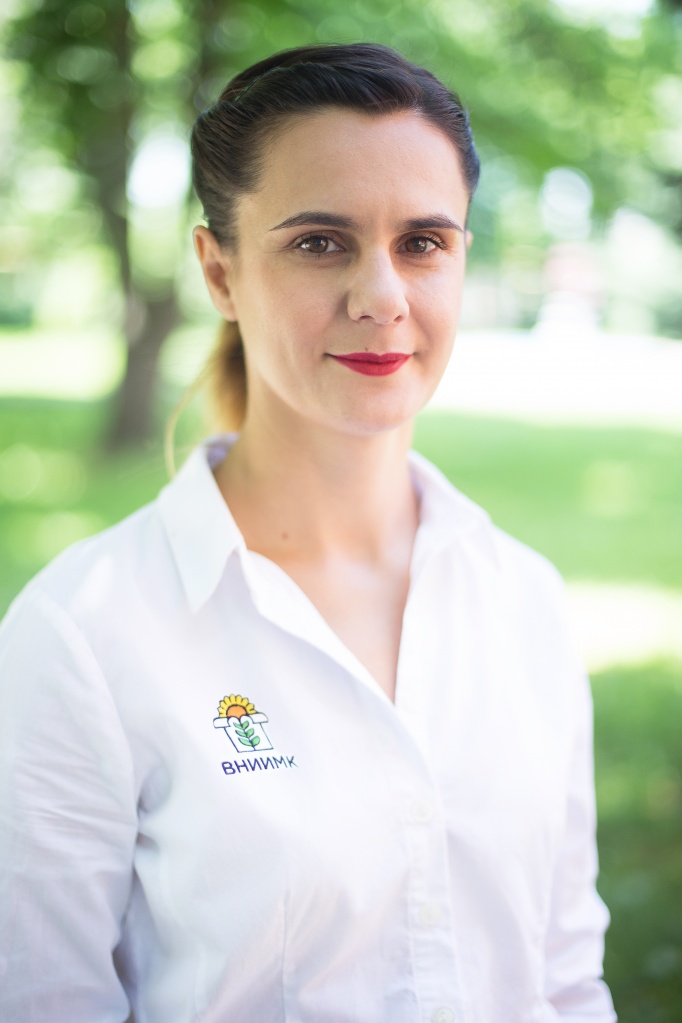 Viktoria Sergeyevna TRUBINA
Viktoria Sergeyevna TRUBINA
Head of the laboratory
Researcher
Tel: (861) 274-59-83
E-mail: gorchitsa@vniimk.ru
Mustard breeding at VNIIMK began in 1952. Scientists of the institute have developed 27 varieties of spring brown mustard, 4 varieties of white mustard, 3 varieties of winter brown mustard, 1 variety of black mustard, studied biological characteristics of crops, the nature of variability and inheritance of the main economically important traits, developed breeding methods for productivity, essential-oil content, large seed size, early maturity, the method of mustard resynthesis from elementary species of Brassica genus, developed system of improving seed production. The winter form of brown mustard, which does not exist in nature, was obtained on the basis of hybrids of mustard and rapeseed, and using the method of resynthesis, the methods of biochemical control of the quality of oil and mustard powder were developed.
Brown mustard varieties of VNIIMK breeding do not contain erucic acid in seed oil and have the potential seed yield of 2.0-3.0 t/ha, oil content of seeds of 45-47%, essential-oil content of seeds of 0.65-0.80%.
New brown mustard varieties Nika and Yunona have potential seed yield of over 3.0 t/ha, oil content of seeds over 47%, early maturity with the growing season of 75-85 days.
The State Register of Varieties approved for use in production also includes the non-erucic, highly productive winter mustard variety Dzhuna, with a potential seed yield of more than 3.5 t/ha.
The white mustard varieties Raduga and Ruslana have a yield of 2.0 t/ha and can be used for food purposes as they do not contain erucic acid in the oil. The green mass yield is more than 20 t/ha.
The white mustard variety Kolla is the best variety for use as green manure. The green mass yield is more than 30 t/ha.
The institute is engaged in breeding work to develop varieties of winter and spring false flax. The variety of winter false flax Karat has a short growing season, which allows effective use of spring moisture reserves for the yield formation, and, after harvesting, for preparing the soil for sowing of winter cereals. The potential yield is 2.5-3.0 t/ha.
Spring false flax Krystall has a high plasticity, which contributes to its growth in different soil and climatic conditions. The potential yield is 2.0-2.3 t/ha.





